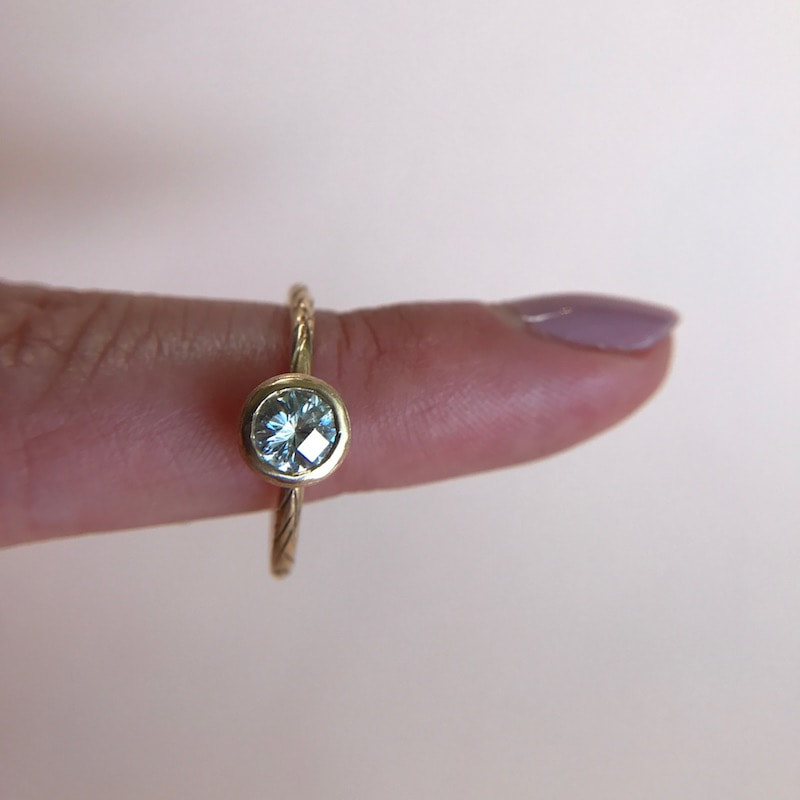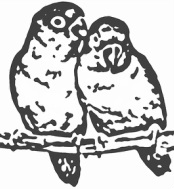|
First, what is a diamond solitaire? It can actually be confusing as this nomenclature is thrown around for rings that aren't actually solitaires. Hint: it doesn't have to do with the shape of the center stone.... A solitaire ring is when there is only one diamond in on the ring and that diamond is the main focal point of the ring. Solitaries do not have any other diamond accents on them, no diamond halo's, nothing - just one beautiful diamond! The name actually refers to the technical setting and can mean to any piece of jewelry with a solitaire setting - such a necklace, or earrings. Solitaires are an extremely popular style these days and are known for showing off the classic elegance of beautiful diamond. But, be careful! The thing about a solitaire is that you simple must nail the design. As with all things simple, you need to refine, refine, refine. Think about the concept of "jeans and a shirt" - this simple layout can be super polished and date night ready or it might be what you wear to repaint your room that chic gray you've been pinning all week at work. Any stylish low key dresser will tell you that you have to have a particular vision in mind in order to slay minimalism. Same deal with your fine jewelry, curation is crucial when designing the ideal solitaire diamond engagement ring. How To Create Your Dream Solitaire RingStep 1 - The Center DiamondSince the diamond is the centerpiece of the ring, it best to start with picking a stone shape that resonates best with you. The most popular shape you see in a solitaire setting is round but any stone shape can be in solitaire. Such as pear, heart, oval, emerald, Asscher, marquise, etc. Because the solitaire setting shows off the diamond as the main focal point, we would recommend you work with your jeweler to really find a stone you love. Step 2 - The ProngsThe prongs are those claw like things that hold the stone in place. First and foremost, they must do their job holding the stone in place but after that is done they we can talk about the aesthetics of the prongs. You have a few choices to make here: metal type, the number of prongs, shape of prongs and orientation of prongs. 1. The metal type could be the same as the band or you might switch it up and go for a mixed metal look. Imagine the combinations out there with rose gold, yellow gold, white gold and platinum all at your fingertips (see what we did there?!) 2. The number of prongs you choose will be based on many factors. In short, you can go with 4 or 6. There are some stones larger enough to accommodate 8 or even 12 - very Marie Antionette and we love this antique twist on a solitaire if your stone has the surface area to pull it off. 3. The shape of the prongs is really a place to get creative and personalized. The prongs can be rounded/"bead shaped", pointed/"claw prongs"/"talon prongs"/"pointed prongs" (all terms for the same thing), or paddle shaped prongs. Then once you pick a shape, you can add another dimension: you can have split prongs or single prongs - seriously the list is endless. You can find good examples of all of these prong shape options online, but most jewelers don't have examples of all the shapes in one store. This a great question to ask your jeweler about because the prongs can really add style and personality to a ring and an important for a solitaire setting. 4. The orientation of prongs is another thing to consider. The most common prong orientation for 4 prongs is to have them at the four corners of the stone, as if each was the corner of a square. You can switch this up by going for a "compass prong orientation" where you shift the prongs to sit at the North, East, South and West points of the stone. The 6 prong options are the opposite. The classic 6 prong has a prong on the North and South point of the diamond and the East and West are open. The alternative 6 prong option is to leave the North and South open, covering the East and West. This is a lot to visualize, but it's simple enough once you do a little visual research. Pro tip: you might also consider a bezel or semi-bezel setting. Step 3 - The Setting Here we are referring to the band and the way in which the prongs connect to it. There are so many types of settings that we can't go into them all. But here are a few key questions to ponder when choosing the setting. Is stacking with bands important to you? You may want to consider a cathedral setting that allows the diamond to be visible and stack with multiple rings. Do you have any antique stone that might be more fragile? You might want a bezel setting. Wear gloves every day? You might want a low profile setting with diamond set into the band. Because the diamond is the focal point in a solitaire setting, the details are super important! Make you go over all of them with jeweler or reach out to u for a chat about what options might suite your personal style best! This post is co-authored by Danielle of LITTLE BIRD and Catherine Cason of Gem Hunt
8 Comments
9/7/2017 01:27:05 pm
Aw yeah! Thanks for showing my solitaires and talking about what makes for a great one. You guys are the best!
Reply
LITTLE BIRD
9/7/2017 01:44:16 pm
No YOU are the best ;) Love your work. Big fans over here!
Reply
5/2/2021 10:32:50 pm
Good post. Loved your styles. Couldn't ask for anything better today! Thanks for this one.
Reply
5/12/2024 10:40:54 am
This guide surely offers crucial insights for anyone considering a diamond solitaire ring. Understanding factors like cut quality, carat weight, and certification is key to making a confident purchase.
Reply
Leave a Reply. |
Archives
March 2021
Categories
All
|





 RSS Feed
RSS Feed
